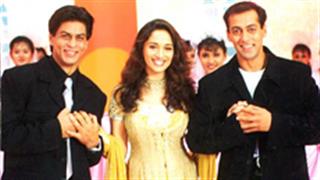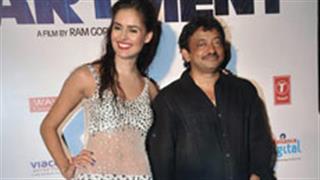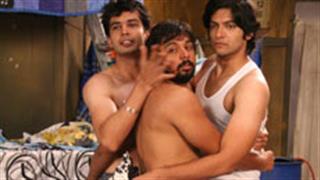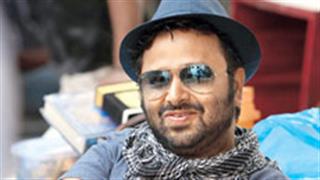The film did not do well commercially though this was much before Amitabh became the Big B but the fleshing out of an obsessive lover by the director and realised by the actor is a finely nuanced portrayal of pathological villainy on the Hindi screen.
This repeated many years later somewhat along the same vein by Shahrukh Khan when he stepped into a diabolic villainous roles in Darr and Anjaam though he was a much-in-demand hero at that time.
Aamir Khan refused the Darr role at that time but he did not balk at playing the suave-tongued, fun-loving, murderous terrorist in Fanaa many years later. He also played the 'friendly' fundamentalist villain in Deepa Mehta's Earth earlier.
Even Rajesh Khanna, the much-loved romantic hero girls would kill themselves for (one actually did) played a psychopathic killer haunted by childhood memories in The Red Rose.
In the 60s and 70s the villain as foil to the goody-goody hero was ubiquitous in Hindi films, a time when Pran ruled. However, he did not hold a monopoly as there were equally villainous peers with designs on the leading lady or on her inheritance. K.N. Singh, Madan Puri, Kader Khan and Ranjeet were more than happy with the negative slotting.

If you jog your memory a bit, the hard disk will show you how Ashok Kumar who perhaps did the very first negative hero role in the all-time box office hit Kismet played the main villain in Jewel Thief with Dev Anand whose performance paled against Ashok Kumar's powerful portrayal.
As Shekhar in Kismet (1943), Ashok Kumar broke every role in the film-hero copybook by becoming the first every cigarette-smoking hero in Indian cinema.
He is Hindi cinema's first anti-hero who has been taken as an example to define Amitabh Bachchan's angry-young-man image created in Zanzeer and Deewar to carry on for many years. His anti-hero image gave a new fillip to Indian cinema's narrative content that produced repeats of the theme with other heroes.
The villainous streak in these characters was rationalized with a sympathetic touch within the narrative such as a sad and deprived past that triggered revenge.

Premnath who began his career as hero in many costume dramas and historicals, was never recognised for his histrionics. But with age, he smoothly slipped into villain's roles and sometimes, made a strong impact such as in Johnny Mera Naam (1971).
Pran worked the other way - he became one of the best character actors in Bollywood when he graduated from negative roles to positive portrayals beginning with Manoj Kumar's film on Bhagat Singh Upkaar (1967.) He never looked back.
Today, the screen spills over with top heroes executing the killer instinct in a different way either as negative heroes or as villains. John Abraham (New York), Sanjay Dutt (Agnipath), Saif Ali Khan (Ek Haseena Thi and Kurbaan), Aamir Khan (Fanaa), Arjun Rampal (Om Shanti Om), Ajay Devgun (Khakee and Diwangee), Akshay Kumar (Ajnabee), Akshaya Khanna (Humraaz), Neel Nitin Mukesh (Johhny Gaddar), Emraan Hashmi (Once Upon a Time in Mumbai) and many more.

In Once Upon a Time in Mumbai 2, Akshay Kumar is enacting on screen, the dreaded real-life villain Dawood Ibrahim. Filmmaker Milan Luthria has taken great pains to create the right 'look' after trying to understand the psyche of one of the world's greatest villain in modern history.
About Sanjay Dutt's Kancha in Agneepath, director Karan Malhotra says, `I wanted an actor who could portray a larger-than-life character and yet retain an element of charm.`
One wonders whether the audience found anything 'charming' about the shaved-head born villain who uses brutal strategies and no excuses to kill. Fact remains that this is one of the best roles of his career.
What makes today's heroes take on villains in their ugliest shades - pathological, criminal, ruthlessly cool in their villainous acts filled with diabolic planning, obsessions, dead bodies scattered everywhere and direct killings left, right and centre?
`Villains have more staying power than any hero, ` says Shakti Kapoor who has a fat portfolio of screen villains he has played through his career. He adds, `Perhaps that is why they do not shy away from villain's roles.`

The flip side is that this trend emphasises the celebration and glorification of villainous characters and a celebration of violence too. `Rishi Kapoor as Rauf Lala in Agneepath has given the best performance of his 40- year-old career that eggs him on to experiment more, ` says a filmmaker who does not wish to be named.
`I have never had such great response, ` says Kapoor who is playing villain in Once Upon A Time in Mumbai 2. A more valid reason is that this gives good actors the scope to explore their potential which the straitjacketed 'good' portrayal of a hero does not always offer.
The earlier question about screen heroes offering role models to the younger generation of men and women does not seem to work any more.
Aamir Khan is playing an unsavoury villain in Dhoom 3 scheduled to release next year. He has geared himself for the high-profile action scenes he wishes to perform himself without a double. He has learnt martial arts for this role. Interestingly, playing romantic foil to his villain is none other than Katrina Kaif whose character is also sketched out in negative shades.

What does Akshay Kumar have to say about his Dawood take-off? `I have sported the famous Dawood moustache for the character for authenticity.
We have tried to fit into the public image of Dawood Ibrahim as much as we could with elegant suits, cool shades and everything else. I do not think Milan is using any grey shades for the character because black would be a better match, ` Akshay Kumar sums up after a string of box office flops in films where he tried to make the audience laugh but they felt like crying.
Will heroes-as-villains become the new hero of the 21st century? Or, is this hopefully, a phase that will fade away when something novel takes off?

















